“Vision without action is a daydream. Action without vision is a nightmare.”
- Japanese Proverb
Engineering metrics and benchmarks are crucial to success but aren’t the only thing needed. Automation is also a core component of any successful engineering improvement initiative–because it helps you take action, optimize KPIs, and remove identified bottlenecks.
These concepts (visibility and automation) are inextricably linked. All the visibility in the world is ultimately meaningless if it isn’t actioned. And for action to be scalable, sustainable, and useful, it has to be grounded in data, targeted (meeting developers where they are), and low friction (it should be easy to take action and not become intrusive).
In short, as you adopt new workflow automations, they must be informed by metrics, visibility, and insight into your unique software development processes. Additionally, the impact and effect of automation and associated policies must be evaluated regularly and adjusted as needed.
This mantra underpins the LinearB Software Engineering Intelligence (SEI+) platform. It first unifies operations across git activity, projects, resource allocation, team productivity KPIs, and team goals. Then, it adds real-time alerting and code-level automation workflows to help teams improve every aspect of the SDLC.
In this post, we’ll explore SEI+ Automation in detail, cover the latest enhancements, and show you how to leverage these workflows to drive operational excellence and impact the business.
“What is SEI+ Automation?”
SEI+ Automation is the execution arm of the LinearB platform. Using the insight and KPIs provided in the metrics views, teams can apply highly targeted automation that:
- Improves code quality
- Accelerates developer productivity
- Provides a great developer experience
- Make software delivery more predictable
While automation generally makes teams more efficient, SEI+ automation is unique because of how and where it is applied–at the pull request (PR) level. Efficiency and quality gains at this stage of the SDLC pay dividends in terms of driving operational excellence and business impact.
A good example is the ability to automatically flag when deprecated components are being used–helping developers adhere to best practices and improve overall code quality. Another example is automating the approval of safe PRs (like patch updates). This type of automation moves work through the pipeline more quickly while freeing up developer cycles for more impactful work. Another great use case is adding more context to PRs, such as estimated review time. This additional information enables devs to prioritize their day and carve out the required time to provide thorough and thoughtful reviews.
What is also unique about SEI+ automation is that it provides visibility into where automation is applied and what impact it has. SEI+ Automation has four key components:
- Impact Dashboard: Holistic visibility of automation adoption and impact
- Automation Marketplace: Find and adopt automation based on how you work
- Real-time alerting: Reduce manual work, cognitive load, and context switching with context-aware alerts and one-click workflows
- Workflow Automation: Applied at the repository level, these customizable rules and automation frameworks create labels, approve safe changes, assign the correct reviewer, and much more
Let’s dive into each one, starting with two brand-new views of LinearB.
Holistic Dashboard for Seeing Automation Impact

This all-new view provides a single pane of glass for your organization’s use of automated actions. In one interactive, filterable dashboard, you can see:
- Usage trends over time
- Actions over time (like HTTP requests or added labels)
- Automation that is in place (# of repositories it’s installed on)
This data helps you understand how your organization uses SEI+ automation and provides visibility into additional opportunities to improve the SDLC by adopting additional automation.
Then, you can explore Metrics, benchmarks, Resources, and Projects views to see the downstream effect of automation and–most importantly–its ability to drive improvement.
<See your use of automation>
Automation Marketplace

The all-new Marketplace is where you’ll find an ever-growing collection of SEI+ automation tools. Fully searchable and sortable, this library provides your launch pad for improved quality, efficiency, and productivity.
The Marketplace is split into:
- Recommended Automations: A curated list of workflow automations that will help you immediately. Examples include adding a label for Estimated Time to Review, actions to merge tiny/safe changes automatically, and automatically routing PRs to the right reviewers based on criteria like security expertise or codebase knowledge.
- 3rd Party Plugins: These automations–designed in partnership with industry leaders like Jit, Snyk, and SonarSource–provide value at different phases across the SDLC and help with everything from flagging security alerts to ensuring the latest components and dependencies are in place.
- Community-led Automations: Many automations listed in the marketplace come from our large community of engineering leaders and developers. If you’ve got a great idea for a new SEI+ automation, we want to hear about it! Please contact us and share your wildest automation dreams–we’re always looking for more ways to improve developer productivity and enhance the developer experience.
Each automation “card” gives you:
- The name of the automation
- Additional context as to whether a quick-start guide exists
- A short description of what it does (more information is available in the docs)
- A check mark indicator of whether or not it’s currently deployed in a monitored repository
- A link to documentation on how to install this workflow automation in your repo(s)
<Find your new favorite workflow>
Real-Time Alerting
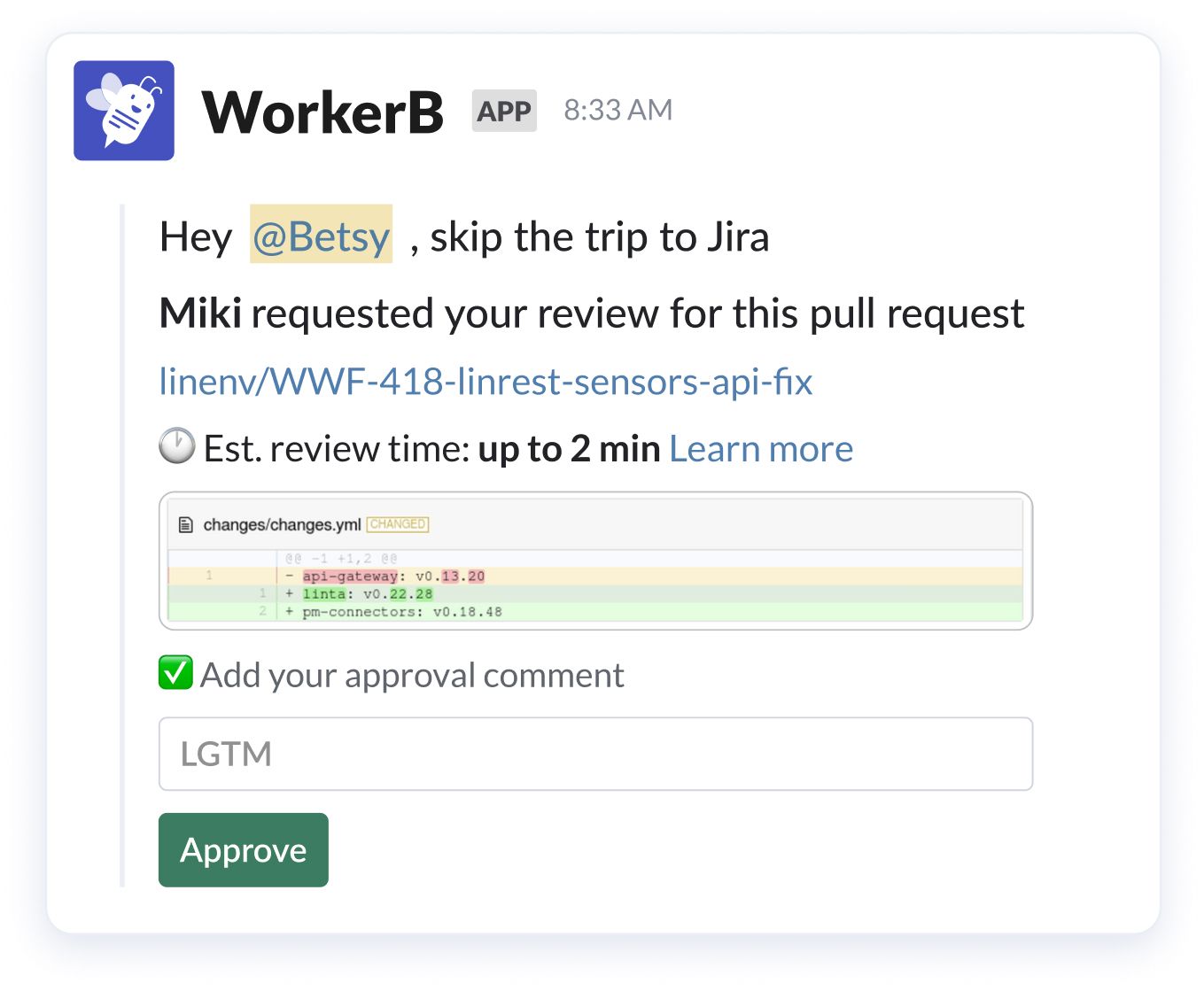
A lot of a dev's time is devoted to collaborating with peers, requesting code reviews, gathering additional requirements and clarification, etc. In the world of remote-first (quickly becoming a standard), communication and collaboration tools are right up there with an internet connection in importance. Automation applied here keeps best practices top of mind, reminds the team of set improvement goals, reduces idle time, maintains visibility into work, and ensures their focus isn’t split.
This streamlines the PR process and gets developers back to their happy place.
And so to help developers adopt better habits (like keeping PRs small and jumping on reviews faster), reduce context switches, and generally improve quality and efficiency, it makes sense to provide automatically fired real-time alerts about:
- Work in flight
- Goals they’ve set
- Ways to offload manual work or take instant action
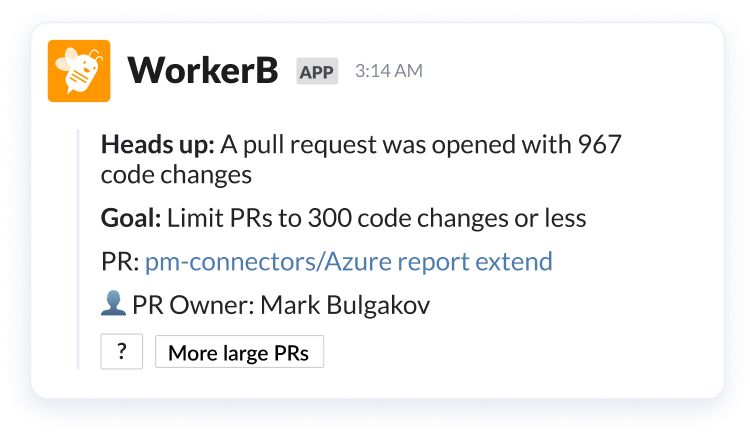
Some of our favorite SEI+ automated alerts include:
- Enabling developers to prioritize their daily task list and maintain visibility of what needs to be done.
- Sharing unassigned PRs with a specified channel to speed up reviews and help the team move work forward.
- Tagging people in git alerts them in Slack and Teams to increase visibility and ensure nothing slips through the cracks.
- Keeping teams aligned to PR size reduction goals. When PRs are small, they’re picked up, reviewed, and approved faster–all of which increase efficiency.
Repository-Level Workflow Automation
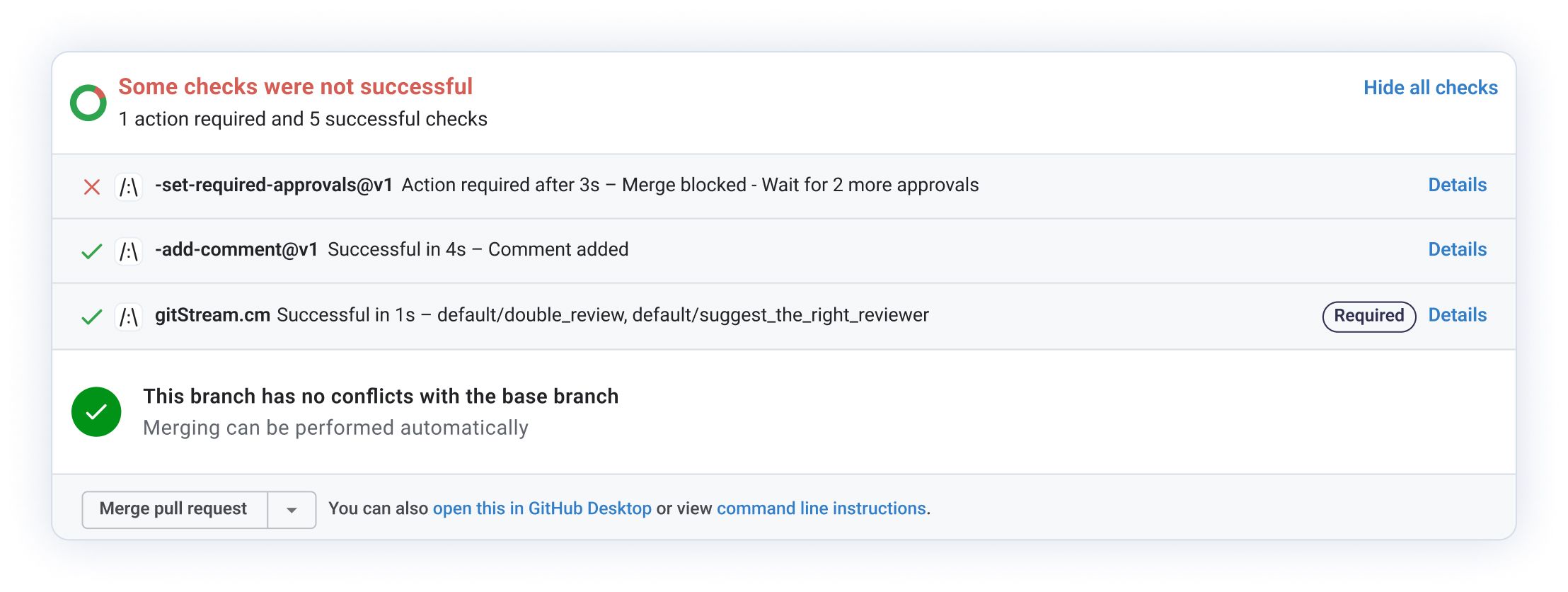
Applying automation here changes the DNA of the PR process–more specifically, it ceases being “one size fits all,” where every PR goes through the same gates, reviews, and approvals.
These git-level automation workflows are in the “cards” discussed in the SEI+ Marketplace section above. Whether applied to individual repositories or rolled out across your organization's entire code base, these automations optimize and streamline the PR process before a PR is even issued–driving higher quality, increasing efficiency, reducing manual work, and freeing up developer cycles for more high-impact, high-value work.
These automations are made up of a series of git-level actions (some have more than one action) and include things like:
- Adding labels to PRs to provide context, like missing tests or adding estimated review time
- Assigning the correct reviewers to PRs–like security teams or those with the most knowledge of that part of the code base
- Adding comments to PRs for things like Dependabot generated minor code updates that can be automatically merged
“Sounds great…but what does all this do for me?”
SEI+ Automation helps teams improve every aspect of the SDLC. How? By:
- Enhancing developer productivity/efficiency
- Enabling focus on value creation through quality
- Driving more predictable software delivery
- Getting delivery pipelines ready for GenAI code
- Providing a great developer experience.
Let’s unpack each one of these aspects.
Enhancing Developer Productivity and Efficiency
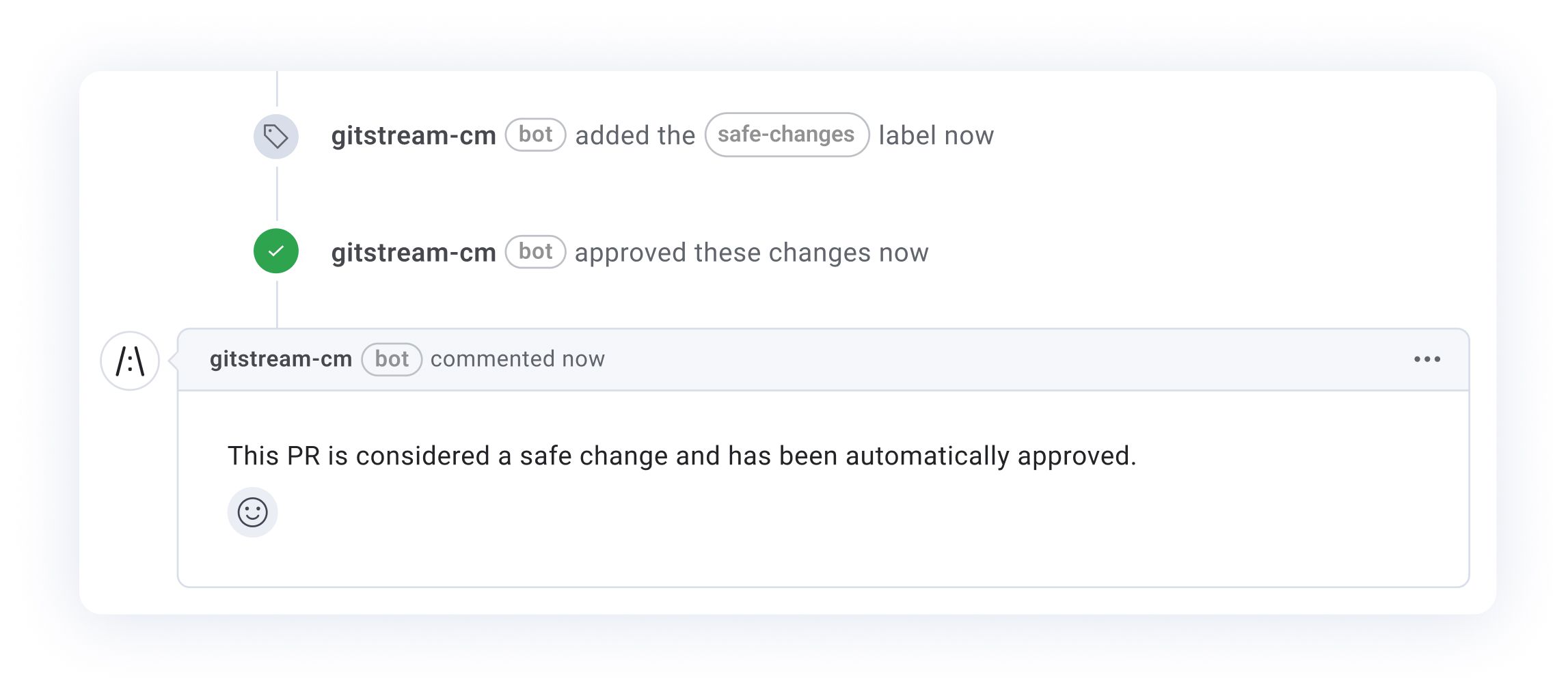
Without a doubt, increased efficiency is the biggest advantage of SEI+ automation. In 2022, Dependabot generated more than 75 million PRs. Even if a human spent as little as 30 seconds reviewing and approving these PRs, that’s ~71 years of developer time that could have been spent on more valuable work.
Automated approvals for safe changes like Dependabot-generated PRs (but you ultimately define this policy) mean no human intervention is needed for PR reviews. Some larger companies estimate that 30% of their PRs are Dependabot-generated. Imagine what you could do with 30% of your PR review cycles being automated away.
Automation helps developers focus on what they love—coding—instead of spending their time on manual merge tasks, data entry, and low-value code reviews. And don’t forget this efficiency also translates to a healthier bottom line by providing a competitive advantage and the ability to deliver value more quickly.
Enabling Focus on Value Creation Through Quality

Teams that leverage SEI+ Automation avoid common quality/security traps like missing or flaky tests, using deprecated components, missing Project tickets, and so much more. SEI+ Automation can also help you find the right reviewer and automatically assign the right reviewer based on data (like who’s most active in the code base/repository).
Reviewers have more context once these common pitfalls are flagged or automated away. They can now conduct a more thorough review without getting bogged down in minutiae that doesn’t add value. This leads to:
- Higher quality code
- Fewer bugs and security vulnerabilities
- Adherence to compliance mandates and best practices
These gains help organizations of all sizes establish a culture of profitable engineering, where every line of code can be considered a business decision (and the correct ones are made).
The bottom line is that higher-quality code and more up-front context mean more focus on activities that add value, such as new features, enhancements, and establishing best-in-class uptime SLAs.+
Increasing Software Delivery Predictability
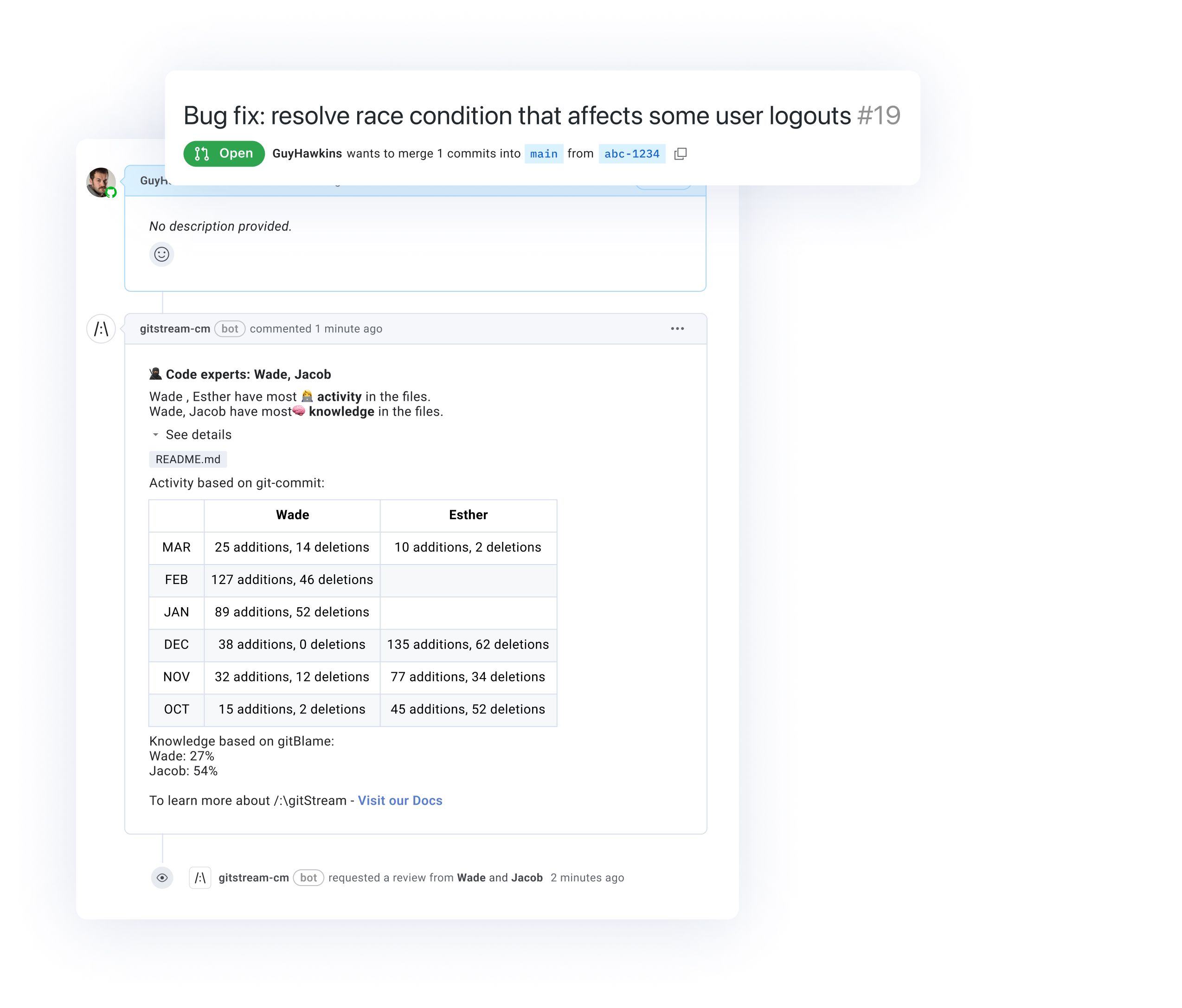
Modern businesses run on software, which makes predictability in delivery a precious resource regardless of industry vertical or team function. Without consistent, dependable operations that predictably deliver high-quality software, marketing can’t plan its next big campaign, sales can’t confidently sell a roadmap, and CS will be in a state of constant “coming soon” limbo.
Healthy predictability is a matter of Stability + Velocity - Risk. And SEI+ Automation helps with every aspect of the predictability equation.
Automation that drives best practices (like assigning code experts for reviews) and helps a team by providing context that reduces cognitive load will see higher quality and stability.
Automation that offloads manual work (like removing the need for human intervention on safe changes) and helps reviewers prioritize their workload will inevitably see greater velocity.
The only variable left is risk. Automation that enforces standards and ensures organizational policy is followed reduces risk.
And SEI+ Automation does all of it!
Getting Delivery Pipelines Ready for GenAI
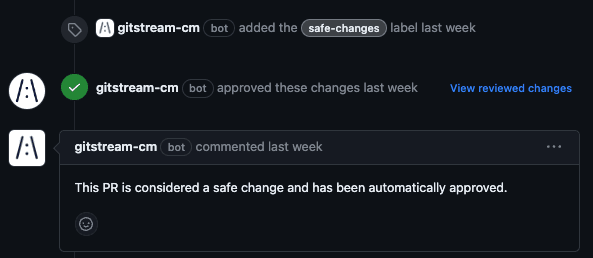
The GenAI and bot revolution is here: Dependabot produced 75 million PRs in 2022. The latest Copilot usage data suggests that nearly half of all the code users create is AI-generated.
To keep up, companies of all shapes and sizes need to ensure that their SDLC pipelines are ready for this tidal wave of AI-built code. Fortunately, automation is the winning approach to wrangling the GenAI sprawl.
Rather than requiring humans to review and approve AI-built code (which is counterintuitive and goes against the purpose of machines writing code), SEI+ Automation can act as the infinitely scalable senior developer who can review this code and flag any issues.
Then, when necessary, human intervention can take place.
Want to dive into the data and learn to measure GenAI’s expected impact? Read the report!
Providing Great DevEx
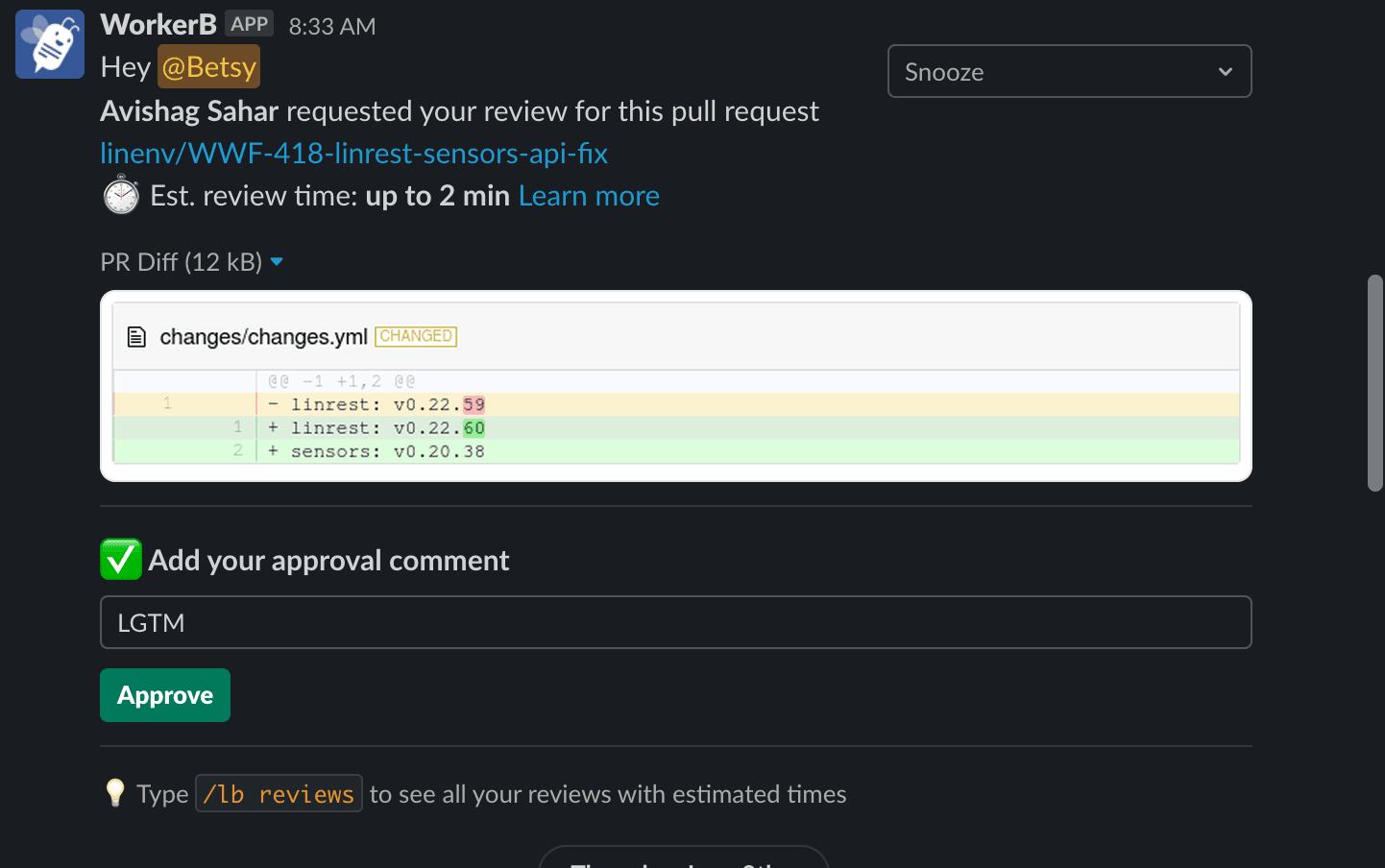
Every company is a software company. That means happy and productive developers are a competitive advantage. So, providing a great developer experience isn’t just a nice thing to have; it’s a business-critical consideration that drives bottom-line impact.
A developer’s happy place is when they’re coding–deep in a flow state with minimal interruptions. Automation that offloads manual work, streamlines code reviews, minimizes churn and reduces cognitive load will greatly improve the developer experience and help them get back to what they love. Whether through git-level automation or real-time alerts and one-click workflows, providing ready access to these tools will help you build a best-in-class developer experience that will attract talented devs, drive retention, and make them more productive.
Next Steps
The all-new SEI+ Automation dashboard and Marketplace are now GA within the LinearB platform. Stay tuned for updates regarding these items as we’re focused on future innovations in this space in the near and long term.
LinearB customers can get started now and explore these great new dashboards!
For Non-LinearB Folks: Get the guided tour of SEI+ Automation today! And if you’re more of a choose-your-own-adventure reader, you can get a free-forever account here!
We hope the new features and functionality will help you achieve operational excellence and better business outcomes.




